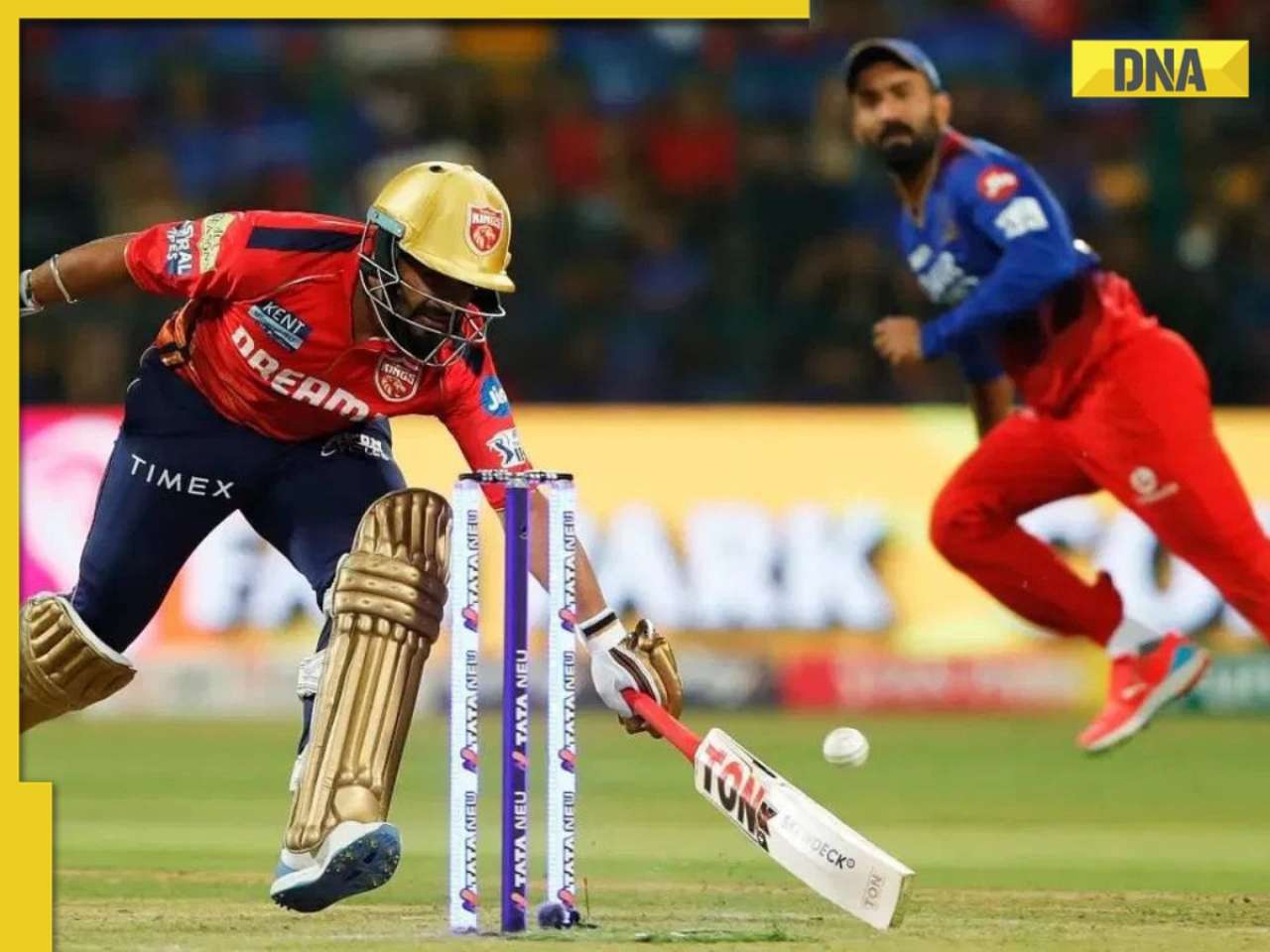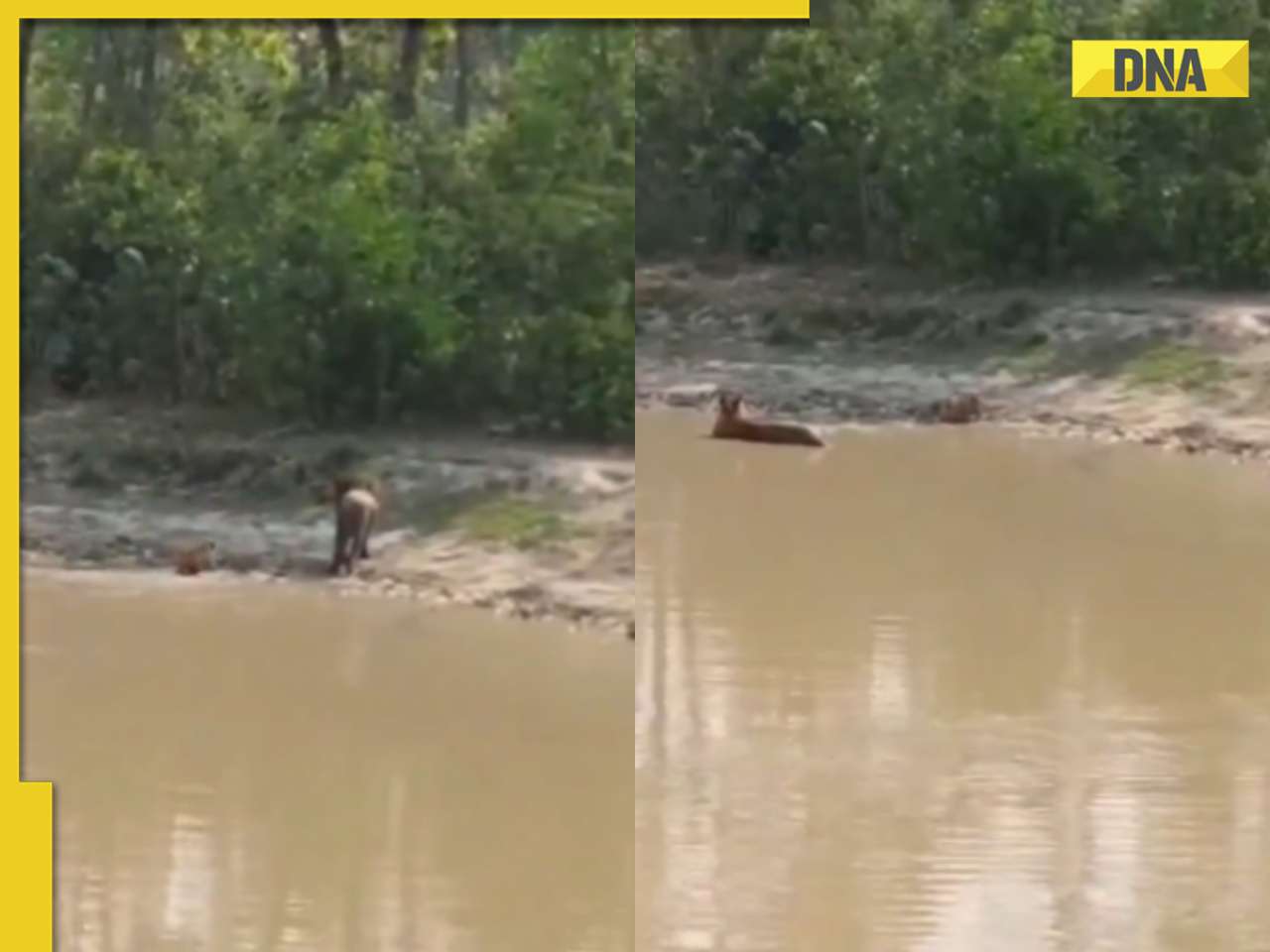On Remembrance Day, we honour the contribution of Indian soldiers whose sacrifices are often forgotten
Last April, on a visit to France to sign an important Indo-French defence deal, Indian Prime Minister Narendra Modi made it a point to visit La Neuve-Chapelle, a small commune near the Franco-Belgian border, about 228 km N-W Paris. The visit was of great significance as it was the first one by an Indian political leader to this tiny town which houses a memorial commemorating 4,742 Indian soldiers who lost their lives at the Battle of Neuve-Chapelle in the WW-I, exactly a century ago.
Contribution
The Indian army contributed significantly to the British war-time effort during WW-I in view of India’s subjugation to the British. Its brave soldiers from various regiments did the country proud by showing great valour and discipline which laid the ground for the current Indian army.
The Crisis
WW-I was sparked by the assassination of Archduke Franz Ferdinand, the heir to the Austro-Hungarian throne by a Yugoslav terrorist in Sarajevo on 28 June 1914. The Austro-Hungarian Empire was a large empire controlled by the Austrian Hapsburg family to which the Archduke belonged. Though the assassination was related to the local politics of the Balkan region of Europe caused by the Slavic resentment of Austro-Hungarian subjugation of weaker East European nationalities, it forced two opposing West European power groups to declare war on each other. The Allies — Britain, France and Russia had treaties to counter the influence of the Central Powers — Germany, Austro-Hungarian Empire and Italy.
Franz’s assassination sparked off a diplomatic battle between Austro-Hungary and Serbia after the former accused Serbia’s secret services of plotting with the Yugoslavian underground in the killing.
The Great War
Austro-Hungary followed up the threat with an actual invasion of Serbia on 28 July 1914 with the bombing of Belgrade. Russia was forced to enter the War to protect Serbia, a fellow Slav power and rushed its armies to its borders with Austria. Germany, an ally of Austro-Hungary had no choice but to mobilise its army on two fronts, the Western border with France and the Eastern border with Russia. Thus, began the Great War with only Britain and Italy opting out of the war. However, Germany’s decision to invade France through neutral Belgium under the famed Schlieffen Plan forced Britain to enter the War especially after Germany refused to comply with its request to stay out of Belgium. The British Expeditionary Force which landed on the French coast on August 12, 1914, also included a number of Indian soldiers. Their presence was to support France in the Belgian Resistance. This led to a timely defence of Paris, the ultimate target in the Schlieffen Plan which advised encircling the French army from the rear to capture Paris. The German attack failed spectacularly due to the presence of the British causing high casualties on both sides.

circa 1914: German boy scouts armed with rifles in Germany —Getty Images
The Allies vs The Central
WW-I raged for four years ending in November 1918. It became a global war in October 1914, when the Ottoman Empire lent support to Central Powers to checkmate Russia. At the same time the Allies had Italy, Japan and USA enter the war. The War soon spread to Africa because of the presence of German colonies surrounded by British and French colonies. Japan too entered the War though not many parts of Asia were affected.
Meanwhile in India
In India, there were mixed feelings when WW-I broke out. There were a series of attempts by Indian nationalists prompted by German support to create a widespread mutiny in the British Indian army against the colonial rulers. There were even attempts to assassinate the Viceroy, Lord Hardinge which failed. Attempts were also made by nationalists to forge an armed uprising against the British after getting arms and ammunition supplies from Germany. The Indian nationalists saw Britain’s troubles as a golden opportunity to secure their own independence. However, the British were saved from an unprecedented outpouring of loyalty and good will from the moderates and liberals in the Indian National Congress who supported them in the fond hope of being granted Home Rule at the end of the war. This helped the British concentrate on the war in Europe and other fronts aided by cash and food supplies from the central government and the Princely States. The British government in India also implemented the draconian Defence of India Act in 1915 which was equipped to arrest, detain without trial and restrict movement of people deemed as enemies of the state.
India helps in WW-I
Indian soldiers also participated in large numbers in WW-I fighting on the Western Front at the First Battle of Ypres in October-November 1914 as a part of the British Expeditionary Force and later the Battle of Neuve-Chappelle in March 1915. The entire war saw the entry of over 1.5 million Indian soldiers of whom, 1,40,000 were deployed in Western Europe in France and Belgium. Of these numbers, 90,000 were sent to the frontline whereas the remaining 50,000 served in the auxiliary troops. The British also deployed 7,00,000 Indians in the Middle East against the Ottoman army especially in the war for Mesopotamia ignoring Muslim feelings for the Ottoman Sultan who also doubled as the Caliph of Sunni Muslims.

NEUVE-CHAPELLE, FRANCE, MARCH 26: Panels engraved with the names of Indian soldiers are seen at the Indian memorial in Neuve-Chapelle, France —Getty Images
The brutality
WW-I was a very brutal war resulting in the death of over 90 lakh soldiers and 70 lakh civilians. The invention of new technologies such as machine guns, trench warfare on battlefronts, fighter planes, mounted machineguns, armed battleships and German U-boats or submarines which fired torpedoes on unsuspecting civilian only acted against mankind. Illness too also took its toll with septic wounds, trench fever, cholera, typhoid, etc. caused by unhygienic surroundings and poor access to healthcare causing severe casualties. The British Indian army lost around 74,746 soldiers in action of which 65,126 soldiers were gravely wounded. The soldiers suffered intensely due to sudden exposure to the Western European climate which they were unaccustomed to along with poor communication and a cultural disconnect.
The end
The World War I ended with debilitating consequences on the Central powers who lost to the Allies. The Russian Empire broke and Russian monarchy came to an end in 1917 with the Russian Revolution resulting in ousting the Tsar. In Austro-Hungary, the Hapsburg dynasty’s last heir, Charles I gave up power over both Austria and Hungary paving the way for the First Austrian Republic and Kingdom of Hungary. This dissolution of the Empire also led to the Slav Republics of Czechoslovakia, Poland, Yugoslavia and Romania emerging from the shadow of the Austro-Hungarian Empire.
The Germans suffered the most sanctions with many of their territories divided between the victorious allied forces. Additionally, a series of treaties were imposed on the spoils causing economic depression and resentment against the Allies which was successfully employed by Adolf Hitler and his allies to create the ground for WW-II. The Ottoman Empire was partitioned into three large parts with the modern republic of Turkey emerging from it due to the Turkish national movement which abolished the Sultanate in 1922 and created a republic headed by Mustafa Kemal Attaturk. The partitioned Middle East was held by the Allies till the post-WW-II.
Indian National Movement
In India, the Indian National movement gained momentum in view of British refusal to recognise Indian wartime effort and reward it with Home Rule. The Indian National Congress under its new leader, Mohandas Karamchand Gandhi began a series of agitations on issues related to the grouses caused by WW-I. The Indian Muslim agitation for protection of the Caliphate turned into the Khilafat Movement which was courted briefly by Gandhi-led Congress to widen the protests against the imperial government. Thus, the WW-I led to the re-emergence of the Indian National Movement which discarded Home Rule and began to demand Swaraj or Self-Rule as the ultimate goal of the movement.
The Indian army lost a number of top officers in WWI with its roll count also reducing by half to about 4,91,000 troops. The Indian army however gained a lot as well after the WW-I especially in terms of modernisation, experience and exposure to battling under difficult terrains. The Indian soldiers were also rewarded around 13000 medals including 12 Victoria Crosses, the highest British Military award for bravery in the face of enemy danger. The World War also saw the British incorporate 1,00,000 Gorkhas from Nepal who later became an integral part of the Indian army post independence. Most importantly, the Indian army was re-organised into three major divisions which has served as the template for the modern Indian army; one was the field army deployed at the borders, a reserve force for fighting invasions and finally a segment for internal security to help police and the government maintain law-and-order. Ironically, this internal security force was first employed against Indian civilians in the Jallianwala Bagh massacre on 13 April 1919 which triggered off a chain reaction for the Indian national movement resulting in a continuous struggle till the achievement of complete freedom from Britain in 1947.
![submenu-img]() Viral video: Ghana man smashes world record by hugging over 1,100 trees in just one hour
Viral video: Ghana man smashes world record by hugging over 1,100 trees in just one hour![submenu-img]() This actress, who gave blockbusters, starved to look good, fainted at many events; later was found dead at...
This actress, who gave blockbusters, starved to look good, fainted at many events; later was found dead at...![submenu-img]() Taarak Mehta actor Gurucharan Singh operated more than 10 bank accounts: Report
Taarak Mehta actor Gurucharan Singh operated more than 10 bank accounts: Report![submenu-img]() Ambani, Adani, Tata will move to Dubai if…: Economist shares insights on inheritance tax
Ambani, Adani, Tata will move to Dubai if…: Economist shares insights on inheritance tax![submenu-img]() Cargo plane lands without front wheels in terrifying viral video, watch
Cargo plane lands without front wheels in terrifying viral video, watch![submenu-img]() DNA Verified: Is CAA an anti-Muslim law? Centre terms news report as 'misleading'
DNA Verified: Is CAA an anti-Muslim law? Centre terms news report as 'misleading'![submenu-img]() DNA Verified: Lok Sabha Elections 2024 to be held on April 19? Know truth behind viral message
DNA Verified: Lok Sabha Elections 2024 to be held on April 19? Know truth behind viral message![submenu-img]() DNA Verified: Modi govt giving students free laptops under 'One Student One Laptop' scheme? Know truth here
DNA Verified: Modi govt giving students free laptops under 'One Student One Laptop' scheme? Know truth here![submenu-img]() DNA Verified: Shah Rukh Khan denies reports of his role in release of India's naval officers from Qatar
DNA Verified: Shah Rukh Khan denies reports of his role in release of India's naval officers from Qatar![submenu-img]() DNA Verified: Is govt providing Rs 1.6 lakh benefit to girls under PM Ladli Laxmi Yojana? Know truth
DNA Verified: Is govt providing Rs 1.6 lakh benefit to girls under PM Ladli Laxmi Yojana? Know truth![submenu-img]() Alia Bhatt wears elegant saree made by 163 people over 1965 hours to Met Gala 2024, fans call her ‘princess Jasmine’
Alia Bhatt wears elegant saree made by 163 people over 1965 hours to Met Gala 2024, fans call her ‘princess Jasmine’![submenu-img]() Jr NTR-Lakshmi Pranathi's 13th wedding anniversary: Here's how strangers became soulmates
Jr NTR-Lakshmi Pranathi's 13th wedding anniversary: Here's how strangers became soulmates![submenu-img]() Streaming This Week: Heeramandi, Shaitaan, Manjummel Boys, latest OTT releases to binge-watch
Streaming This Week: Heeramandi, Shaitaan, Manjummel Boys, latest OTT releases to binge-watch![submenu-img]() Remember Ayesha Kapur? Michelle from Black, here's how actress, nutrition coach, entrepreneur looks after 19 years
Remember Ayesha Kapur? Michelle from Black, here's how actress, nutrition coach, entrepreneur looks after 19 years![submenu-img]() Remember Heyy Babyy's cute 'Angel' Juanna Sanghvi? 20 year-old looks unrecognisable now, fans say 'her comeback will...'
Remember Heyy Babyy's cute 'Angel' Juanna Sanghvi? 20 year-old looks unrecognisable now, fans say 'her comeback will...'![submenu-img]() Haryana Political Crisis: Will 3 independent MLAs support withdrawal impact the present Nayab Saini led-BJP government?
Haryana Political Crisis: Will 3 independent MLAs support withdrawal impact the present Nayab Saini led-BJP government?![submenu-img]() DNA Explainer: Why Harvey Weinstein's rape conviction was overturned, will beleaguered Hollywood mogul get out of jail?
DNA Explainer: Why Harvey Weinstein's rape conviction was overturned, will beleaguered Hollywood mogul get out of jail?![submenu-img]() What is inheritance tax?
What is inheritance tax?![submenu-img]() DNA Explainer: What is cloud seeding which is blamed for wreaking havoc in Dubai?
DNA Explainer: What is cloud seeding which is blamed for wreaking havoc in Dubai?![submenu-img]() DNA Explainer: What is Israel's Arrow-3 defence system used to intercept Iran's missile attack?
DNA Explainer: What is Israel's Arrow-3 defence system used to intercept Iran's missile attack?![submenu-img]() This actress, who gave blockbusters, starved to look good, fainted at many events; later was found dead at...
This actress, who gave blockbusters, starved to look good, fainted at many events; later was found dead at...![submenu-img]() Taarak Mehta actor Gurucharan Singh operated more than 10 bank accounts: Report
Taarak Mehta actor Gurucharan Singh operated more than 10 bank accounts: Report![submenu-img]() Aavesham OTT release: When, where to watch Fahadh Faasil's blockbuster action comedy
Aavesham OTT release: When, where to watch Fahadh Faasil's blockbuster action comedy![submenu-img]() Sonakshi Sinha slams trolls for crticising Heeramandi while praising Bridgerton: ‘Bhansali is selling you a…’
Sonakshi Sinha slams trolls for crticising Heeramandi while praising Bridgerton: ‘Bhansali is selling you a…’![submenu-img]() Sanjeev Jha reveals why he cast Chandan Roy in his upcoming film Tirichh: 'He is just like a rubber' | Exclusive
Sanjeev Jha reveals why he cast Chandan Roy in his upcoming film Tirichh: 'He is just like a rubber' | Exclusive![submenu-img]() IPL 2024: Mumbai Indians knocked out after Sunrisers Hyderabad beat Lucknow Super Giants by 10 wickets
IPL 2024: Mumbai Indians knocked out after Sunrisers Hyderabad beat Lucknow Super Giants by 10 wickets![submenu-img]() PBKS vs RCB IPL 2024: Predicted playing XI, live streaming details, weather and pitch report
PBKS vs RCB IPL 2024: Predicted playing XI, live streaming details, weather and pitch report![submenu-img]() PBKS vs RCB IPL 2024 Dream11 prediction: Fantasy cricket tips for Punjab Kings vs Royal Challengers Bengaluru
PBKS vs RCB IPL 2024 Dream11 prediction: Fantasy cricket tips for Punjab Kings vs Royal Challengers Bengaluru![submenu-img]() Watch: Bangladesh cricketer Shakib Al Hassan grabs fan requesting selfie by his neck, video goes viral
Watch: Bangladesh cricketer Shakib Al Hassan grabs fan requesting selfie by his neck, video goes viral![submenu-img]() IPL 2024 Points table, Orange and Purple Cap list after Delhi Capitals beat Rajasthan Royals by 20 runs
IPL 2024 Points table, Orange and Purple Cap list after Delhi Capitals beat Rajasthan Royals by 20 runs![submenu-img]() Viral video: Ghana man smashes world record by hugging over 1,100 trees in just one hour
Viral video: Ghana man smashes world record by hugging over 1,100 trees in just one hour![submenu-img]() Cargo plane lands without front wheels in terrifying viral video, watch
Cargo plane lands without front wheels in terrifying viral video, watch![submenu-img]() Tiger cub mimics its mother in viral video, internet can't help but go aww
Tiger cub mimics its mother in viral video, internet can't help but go aww![submenu-img]() Octopus crawls across dining table in viral video, internet is shocked
Octopus crawls across dining table in viral video, internet is shocked![submenu-img]() This Rs 917 crore high-speed rail bridge took 9 years to build, but it leads nowhere, know why
This Rs 917 crore high-speed rail bridge took 9 years to build, but it leads nowhere, know why 





































)








)
)




)
)
)
)
)
)